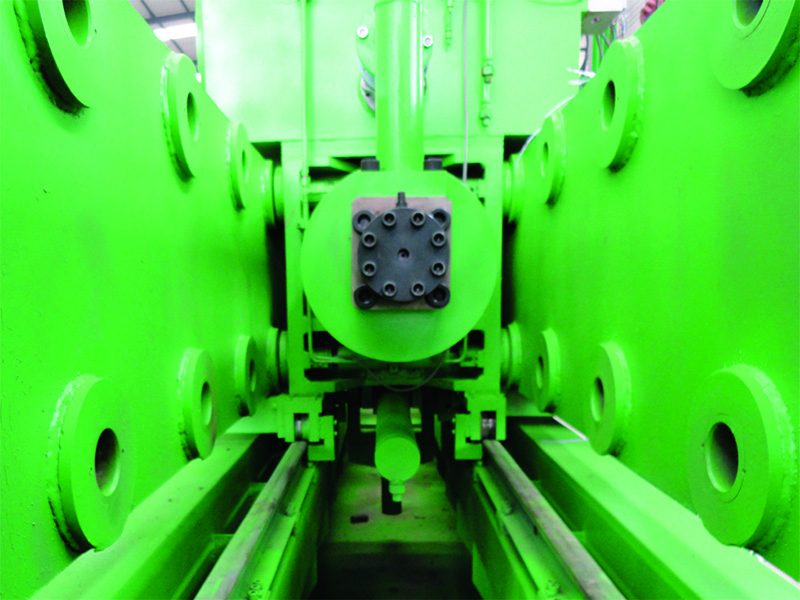Total station search
Hydraulic pressSteel tube hydrostatic testing machineSteel pipe hydraulic press
The invention of the hydraulic press : Before Pascal, some people had studied the statics of liquids, and they did not get Pascal's law very clearly. For example, the Dutchman Steven demonstrated the pressure in a liquid through experiments. He concluded that the force exerted by a liquid on the bottom of a container containing liquid depends only on the area receiving the pressure and the height of the liquid column above it. It has nothing to do with the shape of the container.
In Steven's test equipment, the container ABCD was filled with water, and the container had a circular opening EF at the bottom, covered with a wooden bottom cover GH. There is also a container IRL that is the same height as ABCD and also filled with water. The bottom also has the same size opening and bottom cover. He pulled the bottom cover with a lever, and the other end of the lever increased the weights T and S. The bottom cover was lifted by the weights T and S, and T and S were flat with each other. This proves that although the water weights of the two containers are not the same, the bottom lid receives the same pressure.
Then, on the basis of this, Steven proved that the pressure in all directions in the liquid depends only on the height.

Pascal delved deeper into the static pressure of the liquid. He clearly stated the principle that the pressure in all directions at any point in the liquid is flat. His success was mainly due to the use of the causes of atmospheric pressure to explain the pressure in liquids, to find the similarities between the two, and to wonderfully combine experimentation with reasoning. In the book "On the Balance of Liquids and the Air Content" (1663) published the following year, he discussed the balance of liquids and the pressure on objects immersed in liquids, and then explained the results that once came down to nature based on these results I hate the phenomena of vacuum. In this book, Pascal first introduces a series of test results, and then makes a strict reasoning based on these test results.
When talking about the transmission of pressure in liquids, he reasoned with a hydraulic press model as an example and wrote: "If there is a water-filled container, except for the two outlets, the others are completely closed. One outlet is 100 times larger than the other. A piston of exactly the right size is placed in an outlet. The thrust of a person pushing a small piston is equal to the thrust of 100 people on a large piston, so the force of one person can exceed the force of 99 people. "
Why can Xiaoli beat strong? Pascal thinks this is similar to the principle of leverage. He proved the above conclusion based on the reasoning of the principle of leverage: "Due to the continuity and fluidity of the water in the container, the pressure should be throughout the container. The small piston pushes the water by 1 inch, and the water pushes the large piston by 1%. Moving an inch of pounds of water by 100 inches is obviously the same thing. "
In other words: Although Xiaoli only needs 1% of the strong force, its effect interval is 100 times that of the strong force, so the effect is flat.
Then Pascal reasoned further: Although the force of the large piston is 100 times greater than the force of the small piston, its area in contact with water is also 100 times larger, so the pressure of each part of water, that is, the force per unit area and the small piston are still flat. The position of the big piston is arbitrary, so this relationship has nothing to do with the position of the big piston, and it has nothing to do with its distance, direction and direction.
So Pascal came up with the explicit determinism later described as Pascal's law: "Apply pressure anywhere in a liquid in a closed container, and its pressure will be transmitted through the liquid to the various parts without any loss and perpendicular to all the appearance of the liquid."